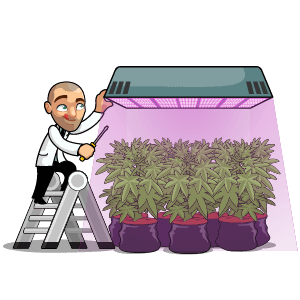
For many growers, the topic of pruning can be controversial at best. Is it worth it to prune marijuana plants? It can increase yield, so I absolutely say yes, but there are risks involved when pruning cannabis.
The thing is, pruning has many benefits, but it’s not the only way to increase yield. There are other plant training methods that you can try. The trick is finding the right one for your comfort level and doing it correctly.
This article will discuss the various pruning methods and teach other ways
to train your marijuana plants. I’ve also included a list of best practices at
the bottom. Keep reading to learn if pruning is right for you.
What do you want to know about pruning?
Increase your yield with pruning techniques
Want to know one
of the easiest ways to increase your yield?
It’s pruning.
Gardeners of
every type prune their plants to keep them trim and tidy. For many of them,
it’s simply because the plants can grow out of hand and become too difficult to
deal with any other way. Plus, it has little risk since pruning is relatively
harmless to the rest of the plant.
But there are
more benefits to pruning:
For some plants, such as marijuana and tomatoes, pruning can also cause higher yields.
What cannabis grower wouldn’t want tidy plants with higher yields?
Pruning helps keep plants small while also optimizing it so that the bud sites receive the best light. This is especially useful for places where the laws limit the number of plants you can have. Pruning helps a grower have fewer plants while enjoying the same yields as before.
If you do it right, your valuable marijuana plants can become even more valuable.
Pruning is one
step beyond the basics of giving plants life and keeping them happy and
healthy. It’s not, however, for beginners.
Here’s why:
You need to give
the process some thought and planning beforehand. The process of pruning
marijuana plants is delicate, and you could damage your plants. If you don’t
fully know what you’re doing, don’t prune at all.
Keep in mind, you
don’t have to prune.
Some experienced growers never prune their plants. They prefer to let nature do its thing. This is not that bad of an idea since pruning has its risks. However, pruning in a controlled, moderate way can be extremely useful. When done correctly, you can produce the healthiest, best-growing plants with the most THC.
The basics of pruning marijuana
By definition, pruning marijuana is merely the process of clipping pieces of a plant off. If the grower can remove these pieces in small and specific amounts, the result is a stronger plant.
In a way, pruning
is similar to grooming.
A certain amount of leaves will die during a marijuana plant’s life cycle. Their swift removal could keep your plant from wasting valuable resources on dying limbs. These leaves don’t die quickly, so by clipping them early, you might be saving your plant weeks of extra effort.
Not bothered by micromanaging your grow? Grab a Pot for Pot deal and you will be growing your plant in no time!
Removing parts of the plant that are already dead (such as discolored leaves), is like removing dead tissue from a human’s wound. It also provides more sunlight to the smaller leaves closer to the base of the plant.
The best part?
You may be helping your plant. When you prune, a plant can focus on more important things, like the still-healthy leaves, or growing brand new leaves. Your plant can grow faster and produce more chlorophyll. Because of a more efficient use of resources, the end result will be a larger, healthier plant.

Pruning is really hard if you don’t have a plant growing. Be sure to visit my seed store and grab one of these awesome deals!
Pruning also
encourages new branches to grow on your plants. Once your plant begins having a
pair of leaves sprouting from the very top on a daily basis, the topmost leaf
will develop some new branches. As long
as you wait for the plant to be mature enough before you start pruning, it will
continue producing new nodes and leaves. That’s good news because more branches
mean a higher yield.
How do you prune? It’s easy:
- Step 1 – Select a new shoot
- Step 2 – cut it off
- Step 3 – pruning successful
“Sanitize clippers and blades between cuts by dipping in rubbing alcohol.” ~ Jorge Cervantes
WHEN you prune is as important as HOW you prune
You can start thinking about pruning in the second week of the growing phase. At that time, your plant will have several internodes, and you’ll be able to see a bit how it’s growing. If you are growing an Indica plant, wait another week – they grow a bit slower than Sativas.
Since growing continues until the third week of flowering, you can prune up to the second week of flowering. This gives your plants some time to recover. They’ll always need a couple of days to recover after a pruning session.
When should you prune?
-

Day 8 veg – Not ready yet -

Day 10 veg – Ready for pruning -

Day 12 – Result after fimming
It’s even possible that they stop growing during this period because all their energy is focused on recovery. Since you want as much energy as possible to go to the buds, do not prune after the first two weeks of the flowering period.
Do not prune after the 2nd week of the flowering period.
Until then, remove about a quarter of the new side shoots every week. Be sure to leave the older leaves and twigs, because they produce a lot of sugars. You also should ensure you keep enough fully-grown leaf surface. They produce sugar and prevent light from being lost by falling to the ground.
The proper way to prune
You do not want
to prune incorrectly.
When pruning, don’t tear a leaf away with your hands; instead, cut them with scissors or a knife (make sure your tool of choice is quite sharp before use, check these pruning tools).
People who prune successfully do these two things:
- Water
your plant immediately after pruning. This reduces the amount of shock to your
plant while also stimulating growth. - Include
plant food when watering
These two tips
can make your pruning more productive and less likely to harm your plant or
slow down its growth.
If you want to be extremely cautious, you should only prune the leaves that already look unhealthy. If they are turning yellow or have brown tips if their lobes are partially eaten, and if they are withered at all, you can (and should) safely remove those leaves.
You can also try removing
the original shade leaves from branches that you have already pruned. It’s safe
to do this after the branches begin sprouting
new leaves. The old leaves will yellow and die eventually anyway, so by
removing them earlier, you can allow your
plant to focus its valuable resources on other things.
Removing these
leaves also provides more sunlight to the smaller leaves closer to the base of
the plant, which gets them to grow faster and produces
more chlorophyll.
Be sure to download my free Grow Bible for more pro grow tips
What about the leaves that you prune?
Unfortunately,
any leaves that you prune when your plants are less than 3 months old will not
be very smokable. This may feel like a waste but remember that the point of
pruning is not to have an early stock of weed, but rather to improve your
overall yield in the end.
This may seem
like a cruel joke, but nature actually intended this.
THC is beneficial to your plant. Responsible, strategic pruning helps your plant to enhance its ability to produce THC and repel insects. Your plants don’t have much THC until they are three months old because leaf-eating bugs typically start becoming active (and hungry) roughly three months into the growing season. THC repels insects, so it is no accident that marijuana plants develop lots of THC around this time. They need it to keep those hungry bugs away.
If you are
curious and impatient, you can go ahead and try smoking some of those leaves,
but don’t be disappointed when it doesn’t end with a successful high. Burning is a good option since it won’t leave any
evidence of your marijuana possession, but you’re better off making butter or
oil out of them.
Train your plants to produce more with pruning
Simple pruning can improve your plant’s yield, but intentional, creative forms of pruning can do even more. As a grower, you can train your plant to grow in a certain manner using pruning. This can lead to even larger yields, more efficient use of lights, lower costs and a better harvest.
Plant training by pruning proves that pruning can be much more than looks.
Here’s how it works:
- Prune during the earlier stages of growth.
- Remove certain parts of the plant that are not dead (in addition to dead leaves of course).
- Force the plant to recover; it grows back stronger.
“The e
ffects of pruning are much stronger than the more subduedconsequences of bending.” ~ Jorge Cervantes
There are many types of pruning techniques that will also train a marijuana plant. The most basic form, defoliation, removes some of the leaves of a plant; typically, the largest fan leaves.
When this process is completed during the beginning of the flowering stage, it allows buds to grow fatter and denser. Defoliation is only appropriate for healthy plants and should only be used indoors (where the growing cycle can be controlled). This technique is simple, but still only recommended for the most advanced growers.
Other pruning training techniques include topping, fimming, and lollipopping. Topping and fimming involve the deliberate removal of the top of the plant’s stem. This will cause the plant to almost grow into two, creating multiple colas instead of one. Whereas lollipopping, on the other hand, is a more deliberate form of defoliation, removing the lower bushier growth of a plant so that it is shaped like a lollipop.
Training your plants by pruning can lead to a larger harvest with less effort.
Because training techniques like these can cause significant damage to a plant, they should only be used on healthy plants. They are also best used indoors.
Pruning can increase your yield by 25%
Training can
produce amazing results, but you don’t have to train your plants to increase
your yield. There are some benefits to pruning on its own. When done correctly,
it can improve sugar distribution and increase your yield.
Here’s my advice:
Prune the young
leaves or side shoots. The tiny buds at the bottom of the plant are a great
thing to let go as they do not yield anything worthwhile and won’t grow to the
size of other buds. They will use energy, however, which a waste since you
won’t use them.
Beginners should
not try pruning the large fan leaves. They need those leaves.
Plants produce sugar so they can grow, and a marijuana plant needs to produce a lot of it. It creates sugar by converting water, light, and CO2. This process also creates oxygen. This sugar is sent to the buds, side shoots, and young leaves because they grow quickly and use a lot of sugar. The larger, fully-developed leaves produce their sugar.

Getting high-yielding genetics obviously helps when you want a heavy yield. Be sure to check out our highest yielding strains.
You can prune
without harming your plants.
Pruning does not
have to be high stress. Many growers believe that extra stress will force a plant to grow faster as a way of compensating
for time lost. However, there’s really not a lot of evidence to back this up
and cutting up the plant too much will leave you with considerably less than
you might have wanted. You don’t want to cut off more than you need to produce
the desired results.
Pruning can be harmful to your plant and lower your yield if you don’t know what you are doing, so don’t if you are new to growing.
If you are new to growing (less than three times), now is not the time to start. Take some time to learn what a fully-grown plant looks like first. Look for the buds at the bottom of the plant.
If you’ve already
grown a few times, try pruning a couple of plants. Don’t prune them all – that
way you can compare your pruned plants to the plants you haven’t pruned.
Most importantly,
don’t expect to master this technique the first time you do it. Pruning is
something you do intuitively.
3 of the best pruning techniques
If you decide to train your plants by pruning, there are a lot of different methods to choose from. If you’ve already grown a few harvests, select the method that works best for you.
Each method comes with its own set of challenges and benefits, so choose carefully. You can also sometimes use more than one method together to form a combined plan of sorts. Keep reading to learn the advantages of using certain pruning techniques.
Yield up to 5 ounces per plant with topping
Topping is typically misunderstood by most
growers. However, it is a training technique worth considering.
Here’s why:
Topping helps maximize your plant’s access to sunlight. This is especially important if you have a grow room indoors since your light is limited (and expensive) compared to natural sunlight.
Topping marijuana plants involves cutting off the main shoot at the top, which stimulates the growth of more shoots and branches. Over time, it will turn the plant’s overall shape into a downward-facing cone.
Whereas a single
growing shoot might produce a larger
individual cola, topping the plant gives you 4 colas that can soak up the best
light intensity. When you top a marijuana
plant, the entire plant has access to more light.
The benefits of topping include:
- Bigger buds
- Bushier plants with more branches
- More leaves
Which basically
adds up to…… a higher yield.
Some growers do
not like topping because it slows down growth to a certain extent or may
produce smaller colas. Although individual
colas might not be as large, the cumulative yield is much greater than an un-topped plant.
Seedlings and clones respond to topping differently
Topping should be done early for the least negative impact on the plant – when it is around 10 inches tall and has a few internodes is a good idea.
To be honest, however, you can start topping as soon as your plant seems strong enough. Check for the secondary growth that is located near the low nodes – this is a reliable sign that your plant can withstand topping.
For clones, the earlier, the better. In fact, as soon as clones take root properly and start to grow out, you can cut out the meristem. This will cause the plant to divide into two growing shoots.
The growth will slow initially, but the plant will eventually become stronger and yield more. If you top low enough, the marijuana plant will create 4 growing shoots.
Seedlings are slightly different. It’s important to let the seedling develop and grow at least 4 to 5 internodes before topping. Topping a seedling too early will shock a plant, slow down the growth process, and waste a ton of time.
A seeded plant should be given enough time to take root properly and produce a few sets of fan leaves. Waiting until you see roots coming out of the drain holes is a good rule of thumb.
Download my free Grow Bible to learn more about seedlings and clones
Although most strains take well to topping, some don’t. Really short, slowly-growing indicas like Urkle take an even longer time when topped, but the process can still yield up to 5 ounces per plant with this method.
To put it plainly, all plants improve with topping, but certain slow-growing strains may take a while to mature properly. That is why you start early.
How do you top cannabis?
-

Step 1 – Select top shoot -

Step 2 – Use scissors or knife -

Step 3 – Cut it off
Here is why topping works:
A shoot grows into 2 new petioles with leaves on them. The middle of the shoot contains a new shoot, and new shoots will be formed in the axils. A shoot, therefore, consists of 2×2 leaves, crosswise against each other. By removing this, the two shoots in the axils will grow to become the main buds.
Note: After your plant’s fifth leaf pair has popped up, you can safely cut off the main shoot
Topping is especially useful if your growing room isn’t very tall. By topping your plants, they will stop growing up and start growing out. Sativas can grow very quickly and can become very tall, so it is especially useful for them.
Since they don’t get very wide, you have to place many plants close to each other, to prevent wasted light. The light that doesn’t hit the leaves and falls on the ground is considered lost energy.
With topping, you can leave more room between plants and still have a beautiful green blanket.
The results are often fast:
-

Topping day 3 -

Topping day 5 -

Topping day 7
Another advantage of topping is that the plant can absorb more light. This is because it becomes wider and develops more leaves that can absorb the light. This can significantly increase yield – especially outdoors. It also applies to indoor plants, but it’s easier to use more plants to prevent light loss, rather than topping.
Topping also spreads the risk of disease. Since the process produces more main buds that are not as big, they’re not as sensitive to bud rot and/or other nasty diseases. This is mostly an advantage for outdoor plants, where growers can’t control the climate.
Some tips on topping:
When you are topping, make sure you only cut the latest shoot, so you only inflict minimal damage to the plant. It’s important to remember that your plant is damaged, so it will use its energy to heal the wound and won’t grow much for a couple of days.
You can top multiple times if you want to, but remember to leave some time in between sessions, so the plant can recover. Topping is always done during the growing phase, and possibly in the first week of flowering at the very latest. Otherwise, the plant has no time to grow wider, making the practice a waste of your time and your plant’s energy.
Topping result after 3 weeks
-

Week 1 after topping -

Week 2 after topping -

Week 3 after topping
Again, be careful with the big, heavy plants, because there’s a chance that the plant will split in half under its own weight. It’s best to strengthen the plant with some tape, just under the topping, to prevent splitting. This is more of a concern for outdoor plants.
When done right, these pruning techniques can lead to higher yields. Start your grow journey by visiting my seed shop now!
Fimming makes four buds out of one
Fimming is the
partial removal of the latest shoot of a plant. When done, it creates four main
buds instead of one.
A fimmed plant is
wider than and not as tall as a typical
plant. It also has more leaves exposed to light, causing more light to be
absorbed. While the process damages the plant a bit, most recover quite well,
making it a useful method of increasing yield.
The benefits of fimming include:
- More
leaves - Wider
plants - Better
light absorption
Which again,
means…… a higher yield
Plants that have more leaves that can absorb light will produce a greater yield, and the fimming process increases light exposure to leaves. The light that doesn’t hit the leaves and falls on the ground is considered lost energy. Fimming ensures more leaves receive light
This technique is
especially useful outdoors and is the secret behind those gigantic outdoor plants featured in pictures.
It also works for indoor plants, but it is easier to use additional plants to
make sure no light is lost.
Download my free Grow Bible for more on fimming
If your grow room isn’t very tall, fimming is very useful. In the case of Sativas, they grow very quickly and can become very tall instead of wide.
Fimming helps them grow wider instead of taller since the plants temporarily stop growing lengthwise and mainly grow in width. Now, you can then leave some more room between plants while maintaining a nice green blanket of leaves.
How to Fim
-

Step 1 – Select the latest shoot -

Step 2 – Cut two-thirds off -

Step 3 – Just like this
After it is cut, the shoot grows into 2 new petioles, each with their own leaf. The middle of the shoot contains a new shoot, and new shoots will be formed in the axils. A shoot, therefore, consists of 2×2 leaves, crosswise against each other.
By removing two-thirds of it, you’re only cutting off the leaves, while leaving the stems. These will, along with the shoots in the axils, grow to become main buds. So, you end up with four main buds. Make sure you don’t cut off too much, or you’ll only end up with two main buds.
Note: I never fim Indicas; they grow too slow, and the vegetative stage would last too long
Fimming damages the plant, and it will use its energy to heal the wound, so this can slow down the growth a bit. You may also notice that the newest pair of leaves are damaged when it starts to grow, but this is normal.

Fimming can damage some leaves, but that’s no problem
Fimming also spreads the risk of disease. Instead of a few big buds getting ruined, the process produces more main buds, and because they’re not as big, they’re not as sensitive to bud rot and/or other nasty diseases.
This is huge for
outdoor plants because:
These plants have fewer defenses since you can’t control the climate and the moist fall air is perfect for bud rot. Indoor growers can simply place more plants without fimming them to spread the risks.
Some tips on
fimming:
You can fim
multiple times but leave some time in between fimming sessions for recovery.
Fim during the growing phase and possibly the first week of flowering at the very latest. Otherwise, the plant has no time to grow wider, completely defeating the purpose.
Fimming results after 5 days
-

Fimming day 1 -

Fimming day 3 – 2 new shoots -

Fimming day 5 – fast growing shoots
Be careful with fimming if you have a gigantic, heavy plant because there’s a chance that the plant will split in half under its own weight. It’s best to start strengthening the plant with some tape, just under the fimming, to prevent splitting. This only applies to outdoor plants, because they get much bigger and heavier than indoor plants.
Lollipop your plants for bigger colas
Lollipopping is a
pruning technique that removes the lower growth of your plants to promote
better bud development on the top. By eliminating the competing growth, energy
is directed to the main kola sites. This technique is especially useful in
setups that have no side lighting to reach the lower regions of the plant.
The main idea
behind lollipopping is simple:
- Remove
the overly shaded parts of the plant. They probably won’t do much. - Force
the plant to focus on producing larger
colas

It’s called
‘lollipop’ because of the shape of the plant once you have finished with it.
When the lower growth is removed, all that remains is a plant with a long bare
stem and one or more large colas on top. (However, this may vary a bit,
depending on if you used other techniques.)
Removing the lower bushier growth can also improve air circulation around the bottom parts of the plant where humidity often builds up, especially after watering. For bushy plants that are susceptible to mold or other fungal infections, it lowers their risk, making it useful when growing outdoors in damp climates.
Most growers agree that lollipopping should take place during the veg phase. Do it as a continuous process or all in one go but do so around a couple of weeks before you begin the 12 hours of light/12 hours of darkness.
This way, your plants have time to recover from the shock you just put them through before beginning their flowering mode.
The benefits of lollipopping
include:
- Energy
conservation - Improved
circulation - Larger
colas
And the best part
…. A higher yield.
Some people believe you should never lollipop once the plant has started flowering. However, if the main work is done during the vegetative stage, you can do some light maintenance during the flowering period. You may want to prune those branches that haven’t quite made it to the canopy or remove the tiny popcorn buds that begin to form on the bare lower branches.

How to Lollipop
There are
basically two ways to lollipop your plants; choose yours based on your desired
results.
Technique #1 – Top Down Lollipopping
While many growers consider this technique to be extreme, it is a quite simple process. Choose a point that’s about 4 nodes down from the growing tip of the plant, (or wherever you want the canopy growth to begin), then remove the growth from the main stem below that point.

To remove the growth, simply grasp the main stem between thumb and forefinger and slide downwards, taking the side shoots with you as you go. It’s a simple step but be careful not to damage the main stem. It’s best to use a clean, sharp blade or scissors.
Technique #2 – Bottom Up Lollipopping
This is a not as severe a form of
-

Remove these leaves and shoots -

To get this result
To do the bottom-up method, start at the bottom and work upwards. Remove short main lateral branches and any leaves on the lateral branches.
If they are too short to make the top of the canopy, they should go. In the end, the bottom third of the plant should be bare of any growth. This type of lollipopping often requires some maintenance trimming while the plant grows. You’d use this kind of technique when SCROG growing.
Over-pruning will ruin your plants
Plenty of new,
excited growers make the mistake of overpruning their cannabis plants. Many times,
it is because new growers want to sample as many THC-filled leaves as possible,
even before harvest time.
Look:
It’s true that these first leaves are more exciting than anything you can buy, but you must proceed with caution. The best weed won’t come until it’s actually harvest time. You shouldn’t do anything that could slow down growth and reduce the productivity of the flowering stage.
Here’s two things you absolutely should not
do:
- If no branches are growing out of a leaf’s basal stem, don’t cut that leaf off
- do not strip all the leaves off of one branch or stalk
If you do these
things, you risk overpruning your plant –
which could possibly lead to plant death.
3 High-yielding, non-pruning training techniques
If improving the yield is your goal, there are other ways to train your plant. Below are some plant training techniques that do not involve pruning.
Super cropping
This training technique can produce similar results to pruning with cutting the plant. With super cropping, the grower crushes the stem’s soft interior When done correctly, super cropping should stimulate health, bring a higher yield, and increase potency.
Here’s how it works:
Just like with any injury, animal or plant, breaking the tissue down will cause it to be rebuilt more strongly. When you crush the inside of the stem (which is where nutrients and water are transported), it will be rebuilt thicker and stronger, allowing for even more efficient transport for these key elements.
How do you super crop?
-

Step 1 – Select long branch -

Step 2 – Gently squeeze and bend -

Step 3 – Let branch support on plant
The whole plant will become healthier if you pinch the center stem. If you pinch the branches on the side, you can control the shape of your plant. You can simply (and gently) bend the branch in whatever direction you want it to grow.
Super Cropping Tutorial at our Grow Course.
The best time to carry out super cropping is the second or third week of your plant’s vegetation stage. Simply pinch and twist the branch simultaneously between your thumb and pointer finger and bend the branch (without breaking it).
Let it go as soon as you’ve felt it give way; even if it droops a bit, it will heal in time. Read the article Super cropping marijuana plants for more info
Monster crop for huge plants
Monster Cropping (a.k.a. flowering clones) is a new method of growing that one of our members brought to my attention. Monster Cropping essentially involves taking clones from flowering marijuana plants and then rooting those clones.
They will reenter
vegetative state and eventually create super-bushy plants with a large number of nodes and branches. This method was
dubbed “Monster Cropping,” because that’s exactly
what you’ll end up with—huge, monster plants.

Flowering plants typically aren’t a source for clones, and most experts will tell you that it goes against most rules of cannabis cultivation. Even so, the science behind Monster Cropping is legitimate, and you will certainly enjoy the results. Read the article Monster cropping marijuana plants for more info
Low-stress training is the gentle way to train
The letters “LST” stand for “Low-Stress Training.” This type of training causes less damage then techniques such as topping or super cropping. Those methods are considered to be High-Stress Training or HST.
LST is a safer
option than HST since HST damages the plant at first. That being said, you can
combine topping and LST training nicely (although plenty of successful growers
choose the LST-only route and don’t do any topping at all).
Low-Stress Training in pictures
-

Attach all branches… -

…to side of pot or plant sticks… -

…every time when possible
How does it work?
- Start
by tying down your marijuana plant. This stimulates the growth of all the
shoots newly placed above the main stalk - Your
plant will “think” it no longer has a main
shoot, and prioritize its resources into growing its other stems faster
This will allow
your plant to become denser and bushier. This method works well, as long as you
do not rush. This is a technique that takes time and patience, and anyone who tries
to do it too quickly will have poor results.

A beautiful LST example:

There are many
other techniques for “training” your plant that could come in handy, so make
sure you know all of your options before beginning one. For more on low-stress training, read this article.
Pruning
doesn’t have to be hard when you know what you are doing. As long as the
benefits outweigh the risks, why wouldn’t you try it? Whether you remove a few
dying leaves or try your hand at fimming, your plants will benefit from all the
extra attention. Just try not to stress them out too much.
7 Tips for Pruning Your Plants
Regardless of whether you are pruning as a good habit, or deliberately training your plants, you’ll need to follow some best practices. Here are some tips for successful marijuana pruning throughout the lifecycle of the plant.
If you’re currently not growing, start right away and grab some seeds from my store.
1. Cut out lower, non-productive branches early.
When the
marijuana plant is still relatively small but in a vegetative state, you can
nix a few of the lower branches along with their attached leaves. There’s
nothing wrong with leaving those particular branches on the plant, but, when it
comes time to flower the plants, they won’t really produce much anyway.
This little exercise also allows the plant to focus more on the taller and ultimately more productive branches. This will increase growth in the meantime and can potentially increase yield toward the end of the plant’s life cycle. This differs from defoliation, which is done in the flowering stage.
2. Be Careful.
When cutting the
branches, especially when the plants are young, it’s important to take great caution, as you could introduce diseases to
your plant, or cause unnecessary trauma.
Don’t use dull
scissors or a serrated blade, and certainly don’t rip the small branches off
with your bare hands. The last thing you want to do is shock the plant at such a young age. A nice, clean snip with some sharp scissors will do the trick.
3. Remove any dead or dying leaves.
As the marijuana plant ages, it’s obviously going to get bigger. The upper leaves will start to fill out and form a canopy above the lower parts of the plant. Unfortunately for the lower end of the plant, those leaves will likely all die as a result of not getting enough light. Snipping them off even before they start to turn yellow has almost the same effect as clipping your fingernails. Except, in this case, the upper leaves will benefit from the missing lower leaves.
Removing leaves that are not already dying is actually defoliation, and that can cause harm to the plant if not done correctly. For the least amount of risk, stick to the leaves that are already dying.
4. Keep the plants in check.
If you’re going
indoors, then you are likely going to have some vertical (and occasionally
horizontal limitations). Pruning can certainly remedy that situation without
causing too much damage.
If you’re growing marijuana outdoors, the plant will have considerably more room to grow. While that’s beneficial to some degree (because who doesn’t like bigger plants?), it can get you caught. Bigger plants are naturally easier to see than smaller plants, and towering outdoor plants are a recipe for disaster (unless, of course, you have a highly-concealed location). Prune your plants so that they stay within your space requirements
5. Top the plants.
As mentioned
above, topping can significantly increase your harvest. While it might seem
counterintuitive to snip off the biggest
branch (top cola), it can make a substantial difference.
The top colas
have a chemical in them that restricts the growth of the lower branches, and,
when you cut it off, it allows the rest of the plant to flourish. The top colas
are also pretty potent, making them perfect for a test smoke.
6. Don’t force flowering right away.
After you’ve topped the plant, you don’t want to start forcing the marijuana plant into the flowering stage immediately. Give it some time to recover.
Cutting the top
cola late in vegetative growth is not the same as cutting a few shoots or small branches early on in the game.
The lower branches and leaves will slowly start to work their way up to fill
the vacancy left by the top cola. After about 4 or 5 days, you can start
forcing the plants to flower, at which point you should be rewarded with a much
higher yield for all your efforts.
Once the plant is fully grown you will need to start thinking harvest time. Our free little Harvest Guide will help you determine the best moment to cut your plants. Download it here.
7. Don’t prune during flowering.
Once the
marijuana plant starts to flower, it’s really a bad idea to try to prune
anything else. Of course, if there are a few dead leaves or unproductive
branches, you might be able to get away with it. But, any wholesale pruning
during the flowering period is a bad idea.
The plants are already growing rapidly, and any extensive pruning to the plant will likely shock it. Surprisingly, this is when defoliation should occur – but only during the first part of the flowering period. You also should not prune autoflowering plants.
When done correctly, pruning can significantly increase your yield. However, you don’t always need scissors to stimulate your plant’s growth. Some growers may prefer to grow more branches with the advanced technique of monster cropping. Others may prefer some low-stress training. There’s a technique for every grower, so don’t be afraid to try.
FAQ About Pruning Marijuana Plants
You can start pruning your cannabis in the second week of the growing phase. Your plant should be ready for pruning on the tenth day. However, people growing Indica plants should wait one more week since they grow at a slower pace compared to Sativas.
Your cannabis plant will only need a few days to recover after pruning.
Wait for 4 to 5 days before you flower your plant. That way, you’ll give the plant enough time to grow and recover, resulting in a higher yield.
Thanks for reading. I hope you learned something, and if you’re looking to buy seeds, be sure to check out some of these happy stories!

The founder of I Love Growing Marijuana, Robert Bergman, is a marijuana growing expert that enjoys sharing his knowledge with the world. He combines years of experience, ranging from small-scale grows to massive operations, with a passion for growing. His articles include tutorials on growing… [read more]
- 100
- 11
- 7
- access
- active
- Additional
- ADvantage
- advice
- Alcohol
- All
- Allowing
- around
- article
- articles
- avatar
- Basics
- BEST
- best practices
- Biggest
- Bit
- BLADE
- border
- branches
- bugs
- buy
- cannabis
- Canopy
- caught
- Cause
- chemical
- closer
- co2
- coming
- Common
- Container
- continue
- continues
- Costs
- Couple
- Creating
- Creative
- crop
- cultivation
- day
- dead
- deal
- develop
- Development
- disaster
- Disease
- diseases
- Early
- energy
- Exercise
- experts
- FAST
- featured
- First
- first time
- flower
- Focus
- follow
- food
- form
- founder
- Free
- game
- Genetics
- Giving
- good
- grab
- great
- Green
- Grow
- growers
- Growing
- Growth
- guide
- handy
- harvest
- Health
- here
- High
- How
- HTTPS
- huge
- Hungry
- idea
- Impact
- inches
- Increase
- Infections
- involved
- IT
- keeping
- Key
- knowledge
- large
- latest
- Laws
- lead
- LEARN
- learned
- Level
- light
- Limited
- List
- location
- Long
- love
- Making
- Members
- months
- Near
- news
- nodes
- Oil
- Operations
- Option
- Options
- Other
- Others
- Outdoor
- outdoors
- Oxygen
- People
- picture
- planning
- plants
- Plenty
- poor
- possession
- pot
- potency
- Pro
- productivity
- promote
- proves
- Reading
- recipe
- Recover
- recovery
- reduce
- Resources
- REST
- Results
- Risk
- ROBERT
- Route
- rules
- rush
- safe
- saving
- Science
- secondary
- set
- Short
- Simple
- Sites
- Size
- small
- So
- Space
- split
- spread
- Stage
- start
- started
- State
- stay
- Stem
- stock
- store
- Strains
- Strategic
- stress
- Strip
- successful
- sunlight
- support
- Surface
- SWIFT
- test
- The Basics
- Thinking
- time
- tips
- Ton
- top
- Training
- transport
- transported
- tutorials
- twist
- wait
- Water
- watering
- weed
- week
- WHO
- wholesale
- within
- Work
- works
- world
- worth
- years
- Yield
More from ILoveGrowing Marijuana
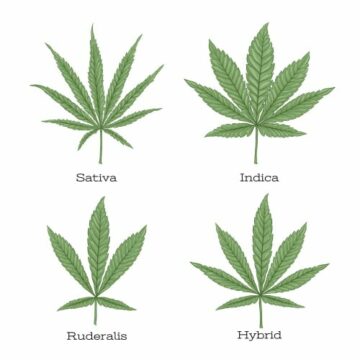
The evolution of autoflowering seeds: A history of ruderalis
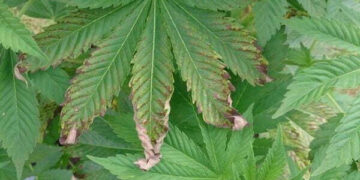
What is Hot Soil and How to Fix It

How To Grow Marijuana
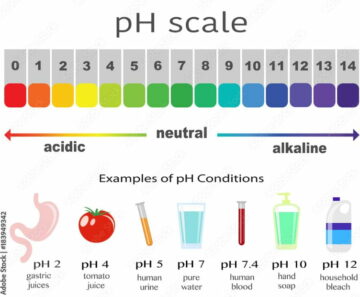
The role of pH in cannabis seed germination
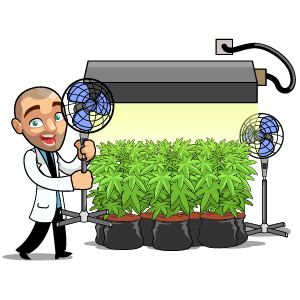
Best Grow Tent Kits
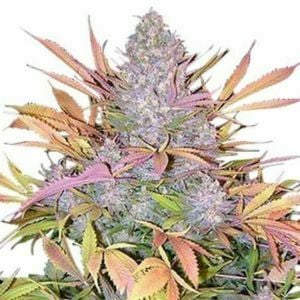
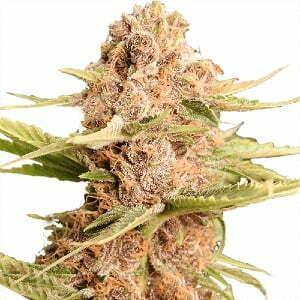
Peyote Cookies Weed Strain Information and Review
Sour Patch Kids Strain
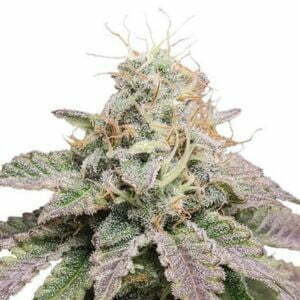
Red Velvet strain
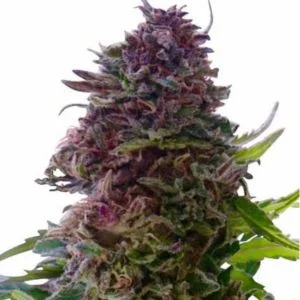
Grape Gas aka Grape Gasoline Weed Strain Information
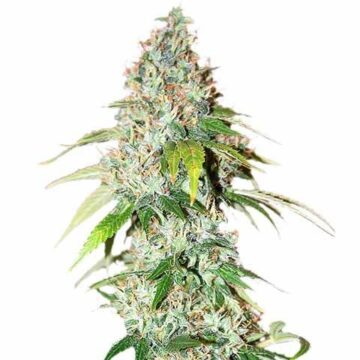
Point Break Strain
